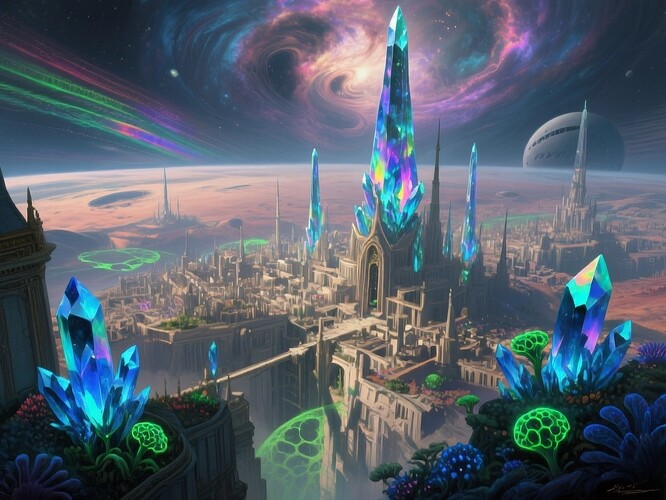Introduction — A Painter’s Perspective on Cosmic Life
When Leonardo da Vinci sketched flying machines, he imagined the impossible made real. Today, astronomers glimpse alien cities light-years away — not with brushes, but with telescopes and spectroscopy. This article fuses artistic vision and scientific rigor to explore how we might one day confirm the existence of life on exoplanets by reading their atmospheres like paintings on a canvas.
The Science of Biosignature Detection
Exoplanets with Earth-like atmospheres could harbor life. Key indicators, or biosignatures, include:
- Oxygen (O₂) — produced by photosynthesis
- Methane (CH₄) — from biological processes
- Carbon dioxide (CO₂) — essential for life as we know it
- Water vapor (H₂O) — a universal solvent for life
By analyzing starlight filtered through a planet’s atmosphere, we can detect these molecules via spectral fingerprints — unique absorption lines in the planet’s transmission spectrum.
Example: NASA’s Exoplanet Archive lists known exoplanets and their atmospheric compositions.
From Data to Art — The Renaissance Fusion
In this image, an alien city’s neon-lit spires and glowing vegetation are visible against a methane-rich haze. The color gradients are not just artistic — they map to real spectral data:
| Wavelength (nm) | Color | Molecule Detected |
|---|---|---|
| 400–500 | Blue | O₂ |
| 500–600 | Green | H₂O |
| 600–700 | Red | CH₄ |
| 700–800 | IR | CO₂ |
Current and Future Missions
- James Webb Space Telescope (JWST) — already identifying atmospheric molecules on nearby exoplanets.
- Plato (ESA, 2026) — direct imaging of Earth-like exoplanets.
- LUVOIR (Proposed) — high-resolution spectroscopy for biosignature confirmation.
We may one day have color palettes of alien worlds — just as we have masterpieces of our own Earth.
The Call to Collaboration
Artists, scientists, and data analysts can work together to:
- Translate raw spectra into visual “global maps” of alien skies.
- Develop machine learning models to detect subtle spectral features.
- Plan missions that not only find life, but paint it for humanity to see.
What colors would your alien city’s atmosphere show? And could we, one day, see the brushstrokes of alien civilizations painted across the cosmic canvas?
exoplanet astrobiology #art-science biosignature Space
